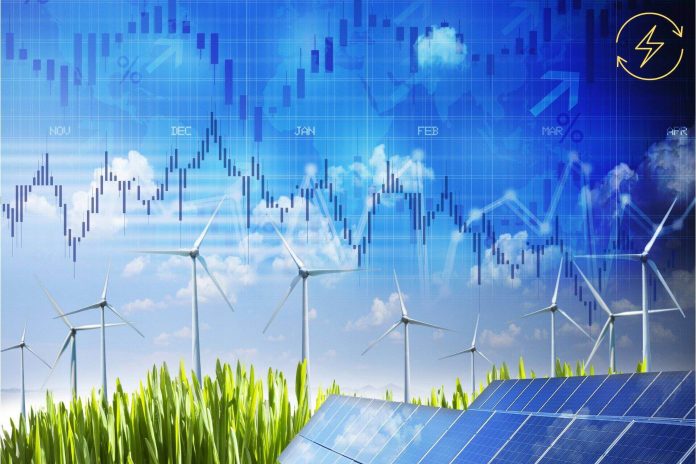By collecting publicly available data, RESC regularly analyzes energy trends in Croatia. The analysis for the first three months of this year shows that the total electricity consumption in the Croatian power system was 6,858 GWh. The total electricity production in that period from power plants in Croatia was 4,536 GWh, of which 1,429 GWh, or 31.5%, came from non-renewable sources and 3,107 GWh, or 68.5%, from renewable sources. Total electricity consumption was 4,660 GWh, with 4,615 GWh consumed in Croatia. Since available energy exceeded consumption, surpluses were exported to foreign markets.
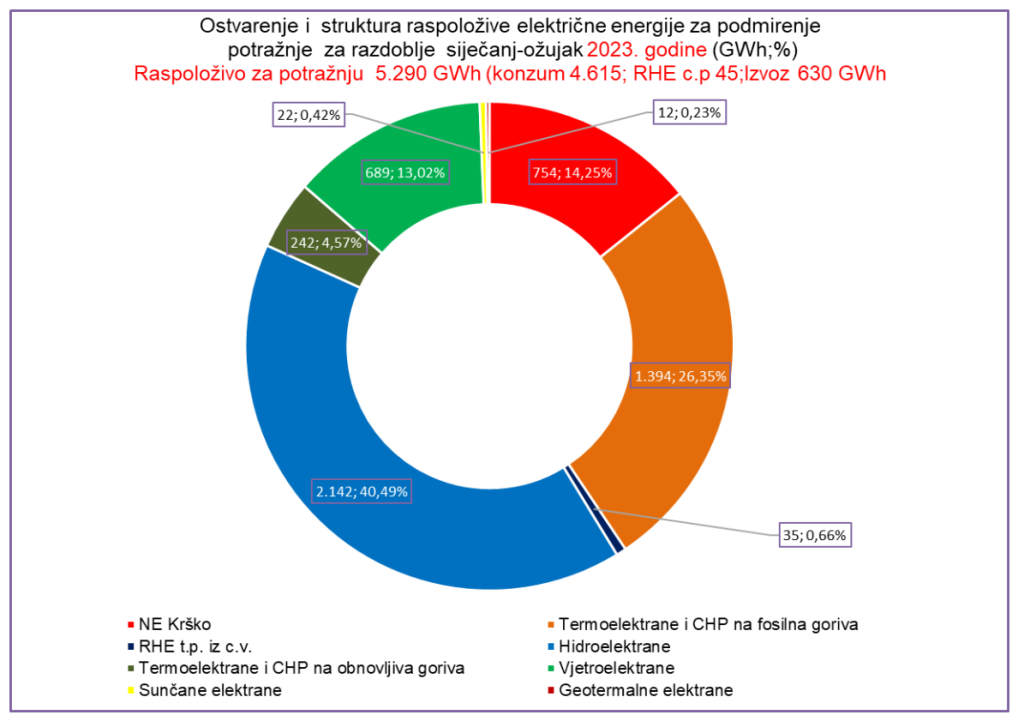
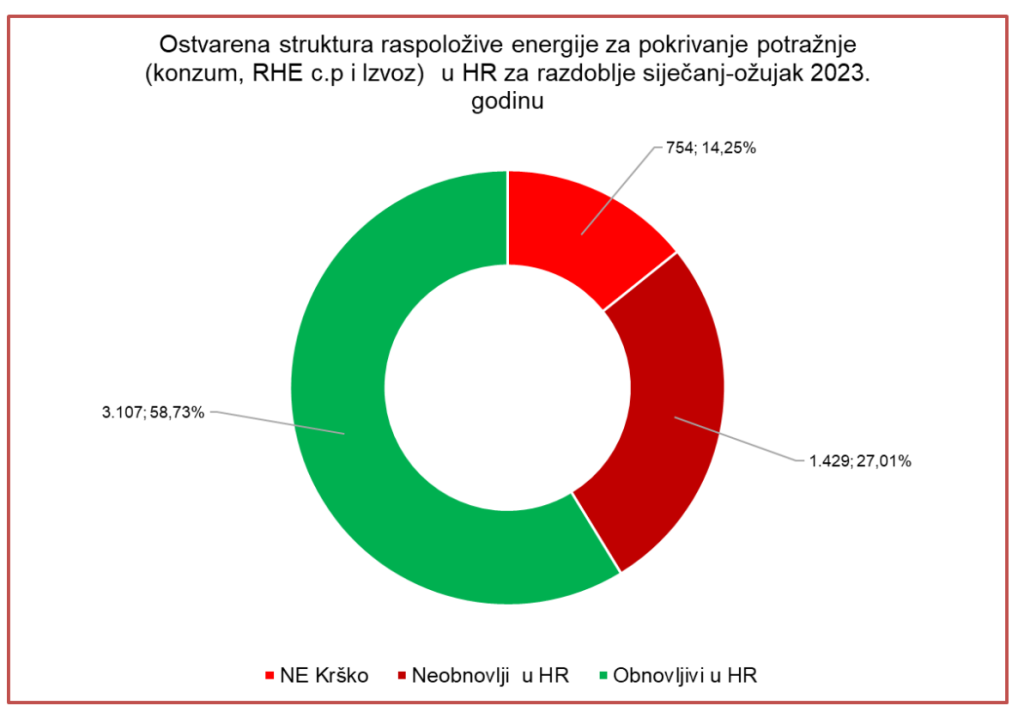
Renewable energy sources accounted for 58.73% of the available energy to cover consumption in the first three months of this year, while non-renewables accounted for 27.01%. The Krško nuclear power plant, with a Croatian share of 50% capacity, contributed 14.25%. Due to increased hydroelectric production, imports were not necessary in the first three months of 2023.
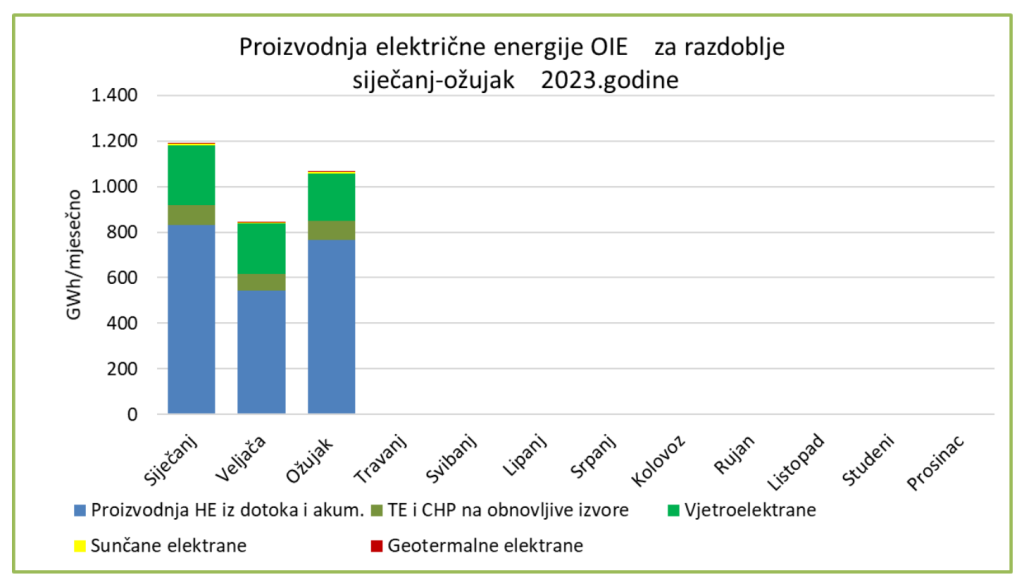
As shown in both charts, hydroenergy accounts for the largest portion of domestic renewable energy production.
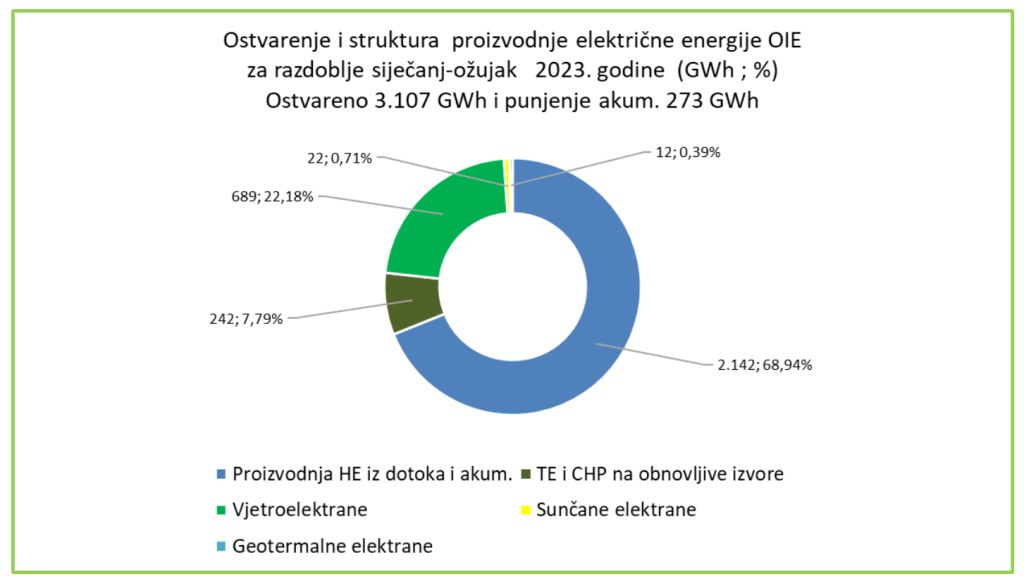
Analysis of electricity production obtained solely from renewable sources in the first three months of this year shows that hydroelectric production predominates, accounting for 68.94%, indicating our dependence on good weather conditions. When there is a drought and no rain, the vulnerability of relying on hydroelectric power plants is evident, and energy imports become necessary. Solar power plants produced only 0.39% of the total renewable energy during the same period, while wind power plants produced 698 GWh and accounted for 22.18%. Power plants using biogas, biomass, and other renewable fuels produced 242 GWh of electricity and accounted for 7.79%.
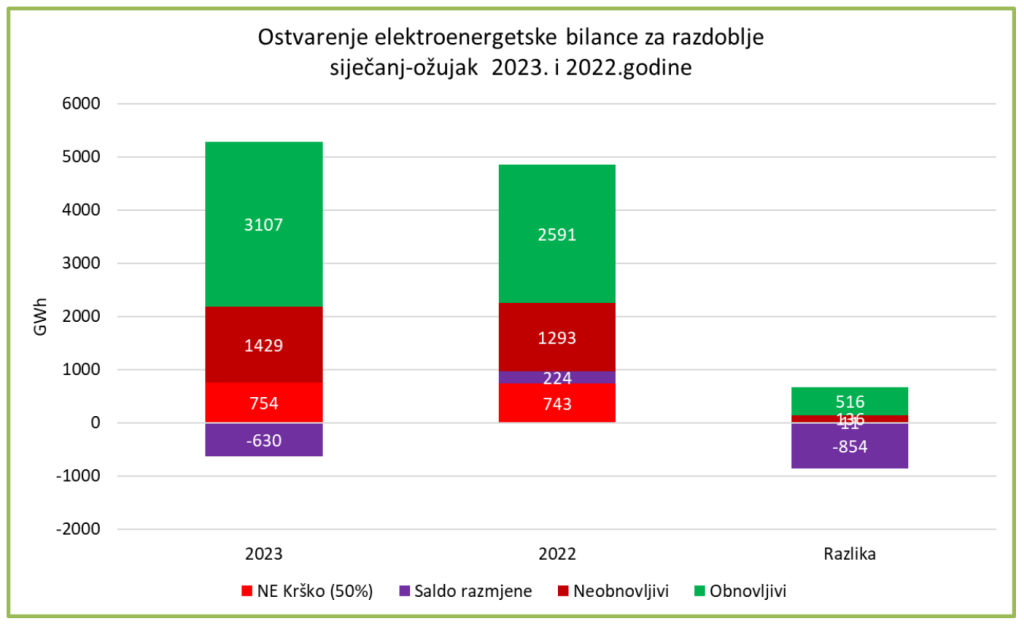
Comparing the first three months of this year to the same period last year, it is evident that very favorable energy indicators have been achieved, which should bring good economic results in the operations of energy companies, primarily HEP. For example, in the first quarter of this year, NE Krško produced 11 GWh more than in the same period last year. Renewable energy production in the first three months of this year was 516 GWh higher than production in the first three months of last year. In the observed period, hydroelectric production from water inflow and accumulations was 519 GWh higher, wind power plants produced 5 GWh more, and solar power plants produced 8 GWh more. Production of electricity from other renewable energy sources was 16 GWh lower in the comparative period.
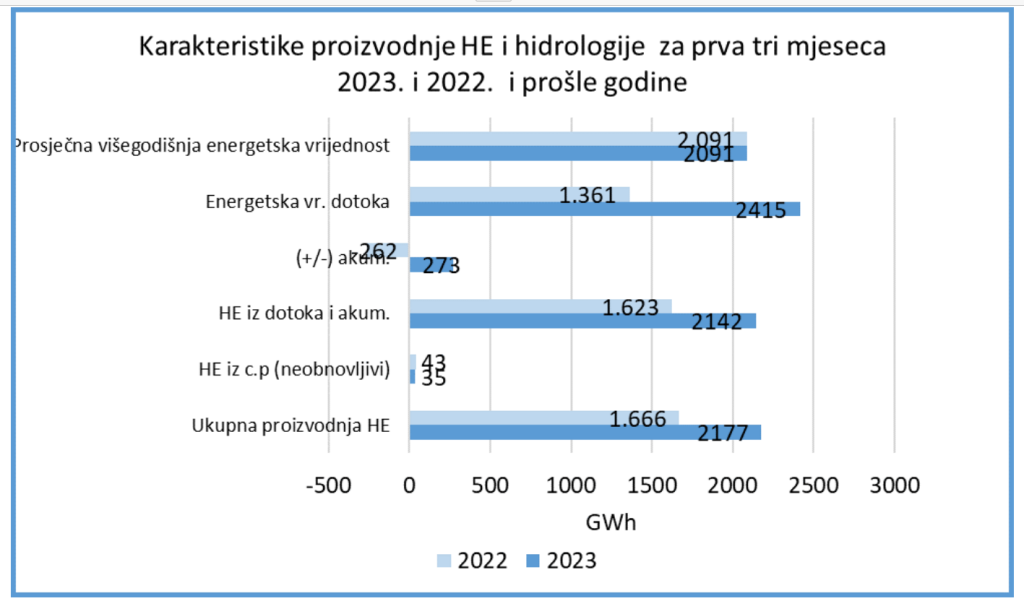
The total production of hydroelectric power plants in the first three months of this year amounted to 2,177 GWh, of which 25 GWh was from pumped storage hydropower plants (non-renewable part). The energy value of water inflows for hydroelectric power plants in the first three months of this year was 1,054 GWh higher than in the same period last year. Due to very high groundwater levels in hydroelectric systems, large water inflows for hydroelectric power plants, expected snowmelt in April and predicted rainy April and May, large energy values of water inflows are expected in the next two months. This also means favorable energy and economic trends, and most importantly, the security of supply for consumers over a longer period of time and the security of operation of the power system.
Energy trends in March 2023.
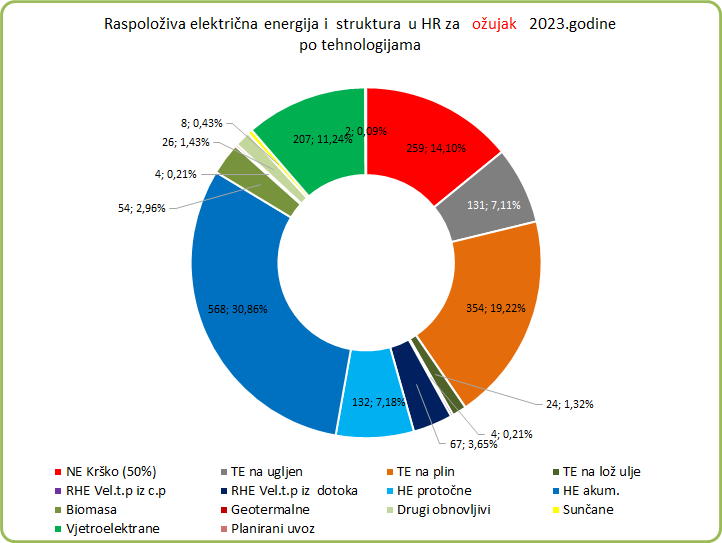
In March 2023, the highest share in available energy was held by hydropower plants, with 41.69%, followed by gas-fired power plants with a share of 19.22%, and the Krško nuclear power plant with 14.10%. Wind power plants accounted for 11.24% and, along with hydropower plants, achieved the highest share of renewable energy in the total energy structure in March 2023. Due to the simultaneous high production of hydro and wind power plants, and the lack of flexibility resources in the system, it was necessary to export energy almost throughout the entire month. The Krško nuclear power plant was operating at full capacity, greater than nominal.
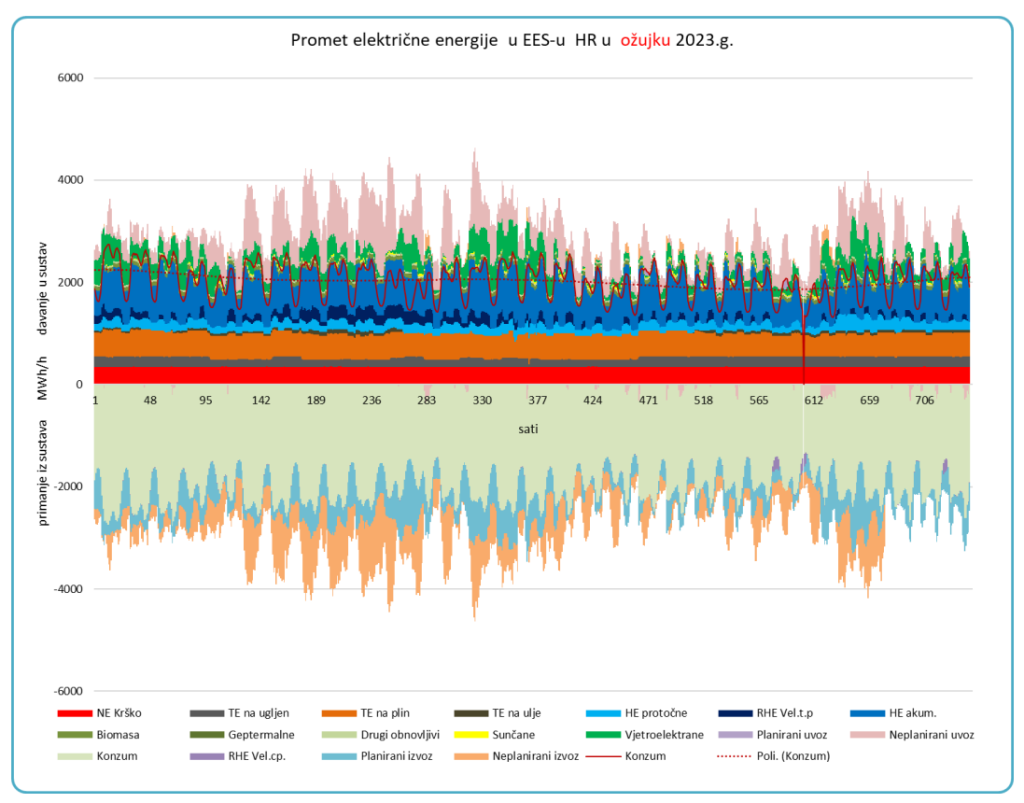
The maximum hourly turnover was 4,632 MWh/h and was achieved on March 14 at 12 pm, while the maximum hourly transit was 1,831 MWh/h and was achieved on March 11 at 11 am. The transmission network held up well throughout.
In March, there was significant variability in daily consumption and peak loads due to climate and weather effects throughout the month. The previous month also saw below-average production from wind farms with the worst utilization factor in the past two years. Due to good hydrology in March, there were fewer flexibility resources in the production balancing services, and a large part was achieved through interconnections. Due to the high production from hydroelectric power plants in March, there was an export of 328 GWh of electricity.
There was a high physical transit of electricity through the HOPS high-voltage network to neighboring regulatory areas, averaging 498 MWh/h, resulting in increased losses in the Croatian transmission network.
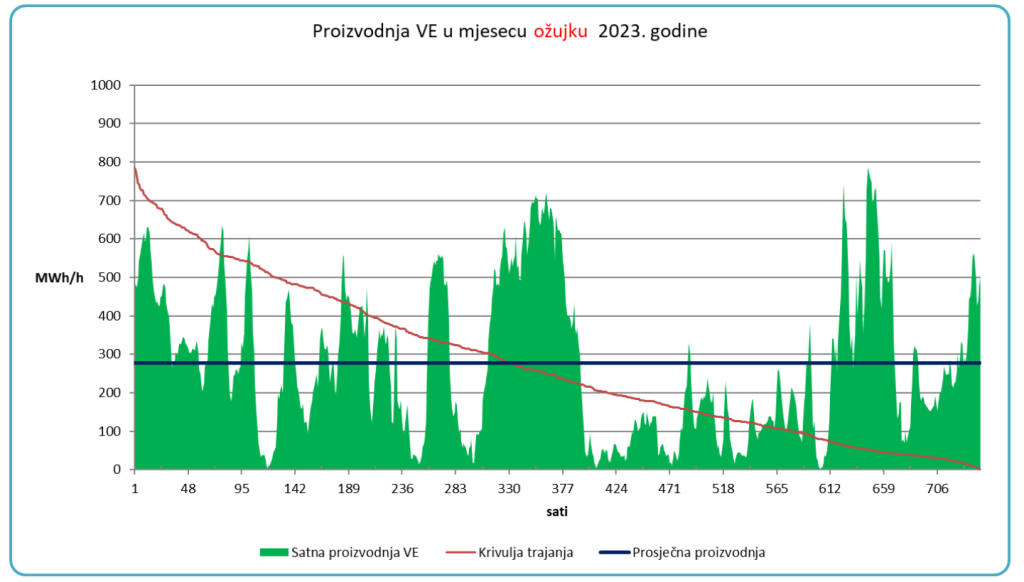
The total production of wind farms in March was 206,736 MWh with a power utilization factor of 28.4%. This is much lower than the March average and indicates the worst windiness since 2011.

The average production of wind farms in March was 277.9 MWh/h, while the maximum production was 786 MWh/h. The maximum power utilization factor was 80.2%. The maximum hourly increase in wind farm production “towards up” in March of this year was 202 MWh/h, and “towards down” was 165 MWh/h.
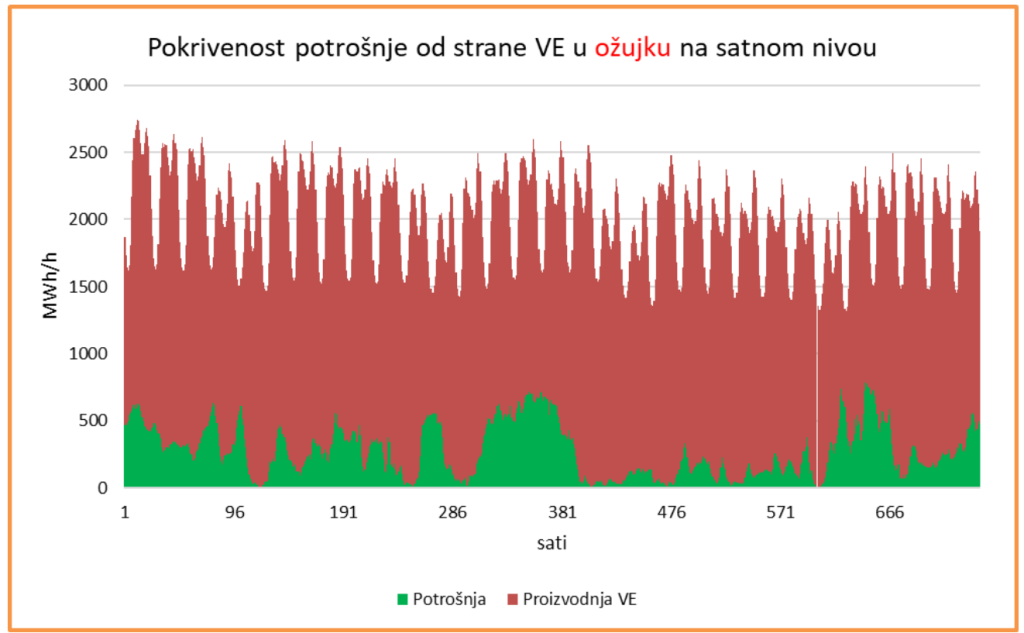
The maximum hourly coverage of consumption by wind farms in Croatia was 48.5%.
The prices of electricity in March 2023
During March, the price of electricity in the Western European Union averaged around €120/MWh with a tendency to decrease, which is significantly lower compared to the same month last year.
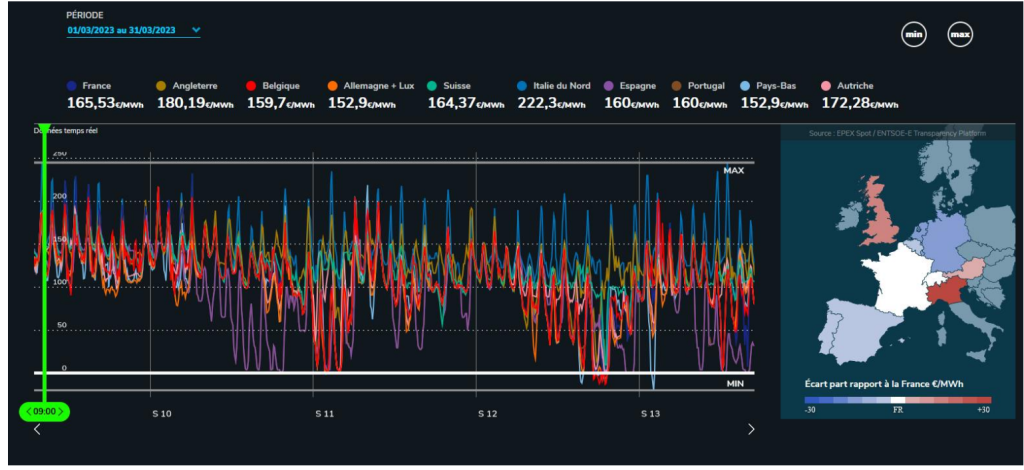
The decrease in electricity prices in the European Union was influenced by higher air temperatures and, consequently, lower energy consumption for heating. The price of gas has also significantly dropped, while at the same time, the production of wind and hydroelectric power has increased. It is also worth noting the increased production of solar power plants, whose production during daytime hours can sometimes result in negative prices.
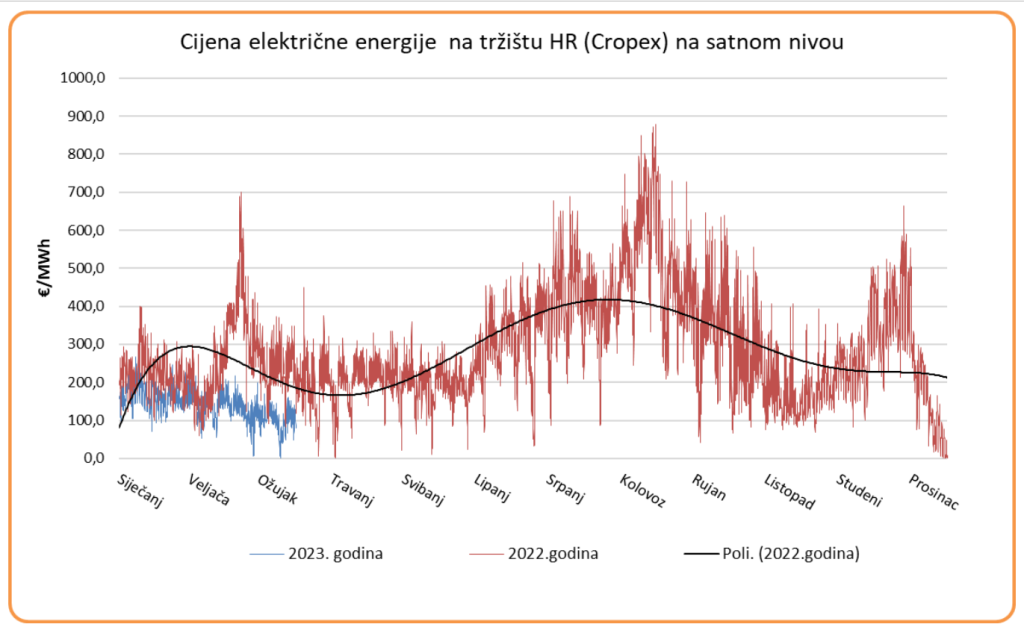
The average hourly price of electricity in Croatia in March was 113.64 €/MWh, while in March of last year, it was 293.69 €/MWh, a decrease of 180.05 €/MWh, or 61.3%. The average hourly price for the first three months of this year was 135.25 €/MWh, while in the same period last year, it was 231.91 €/MWh, a decrease of 96.66 €/MWh, or 41.68%.


